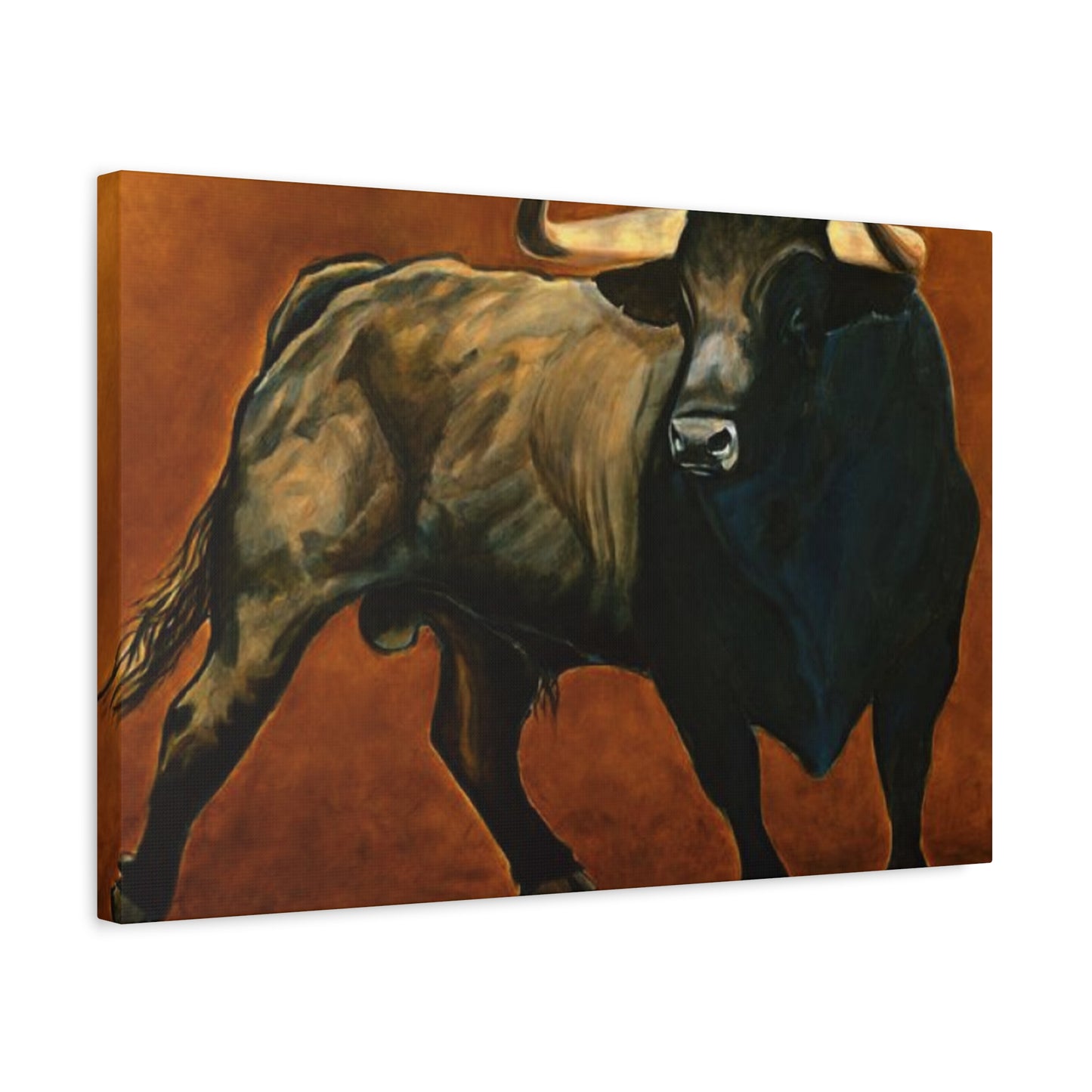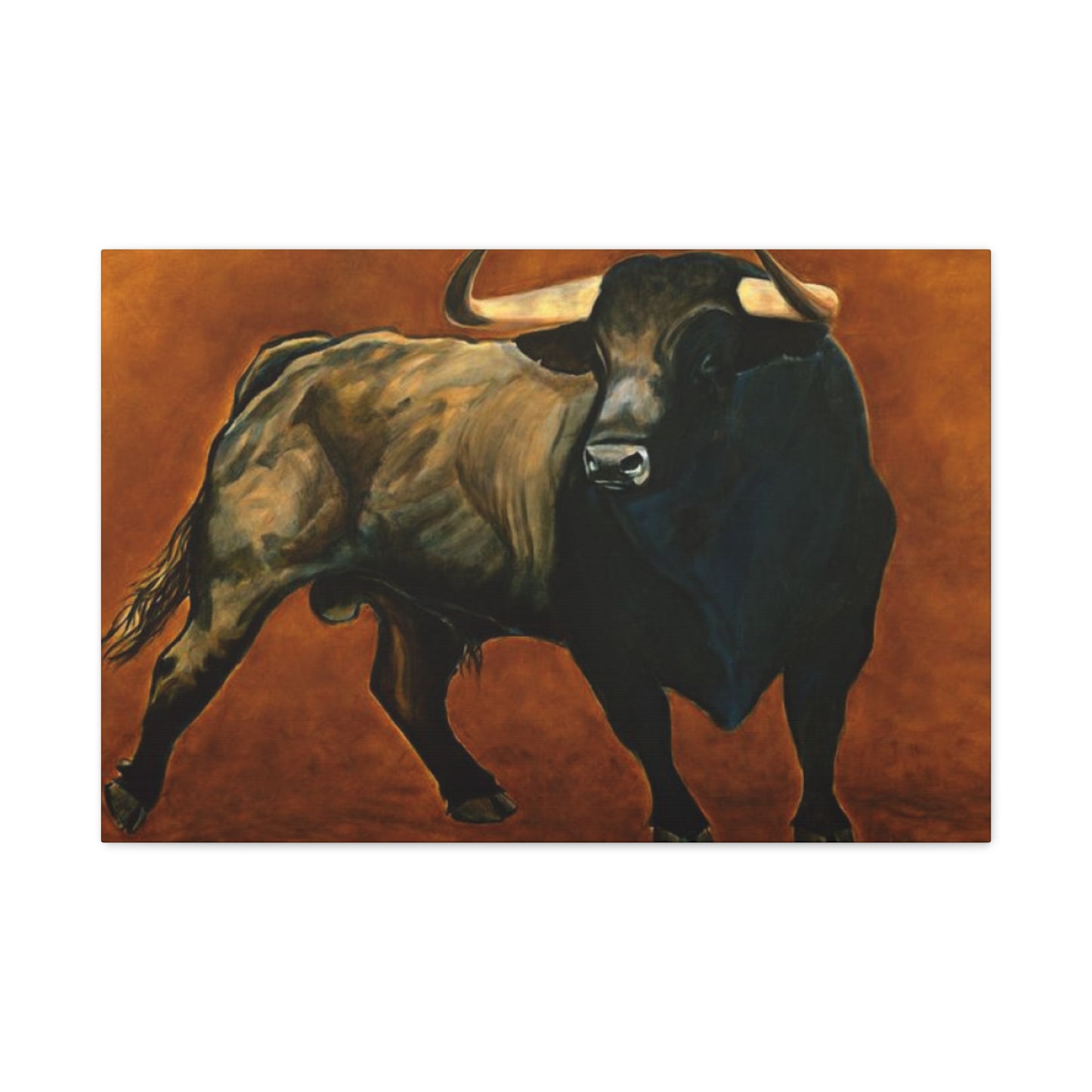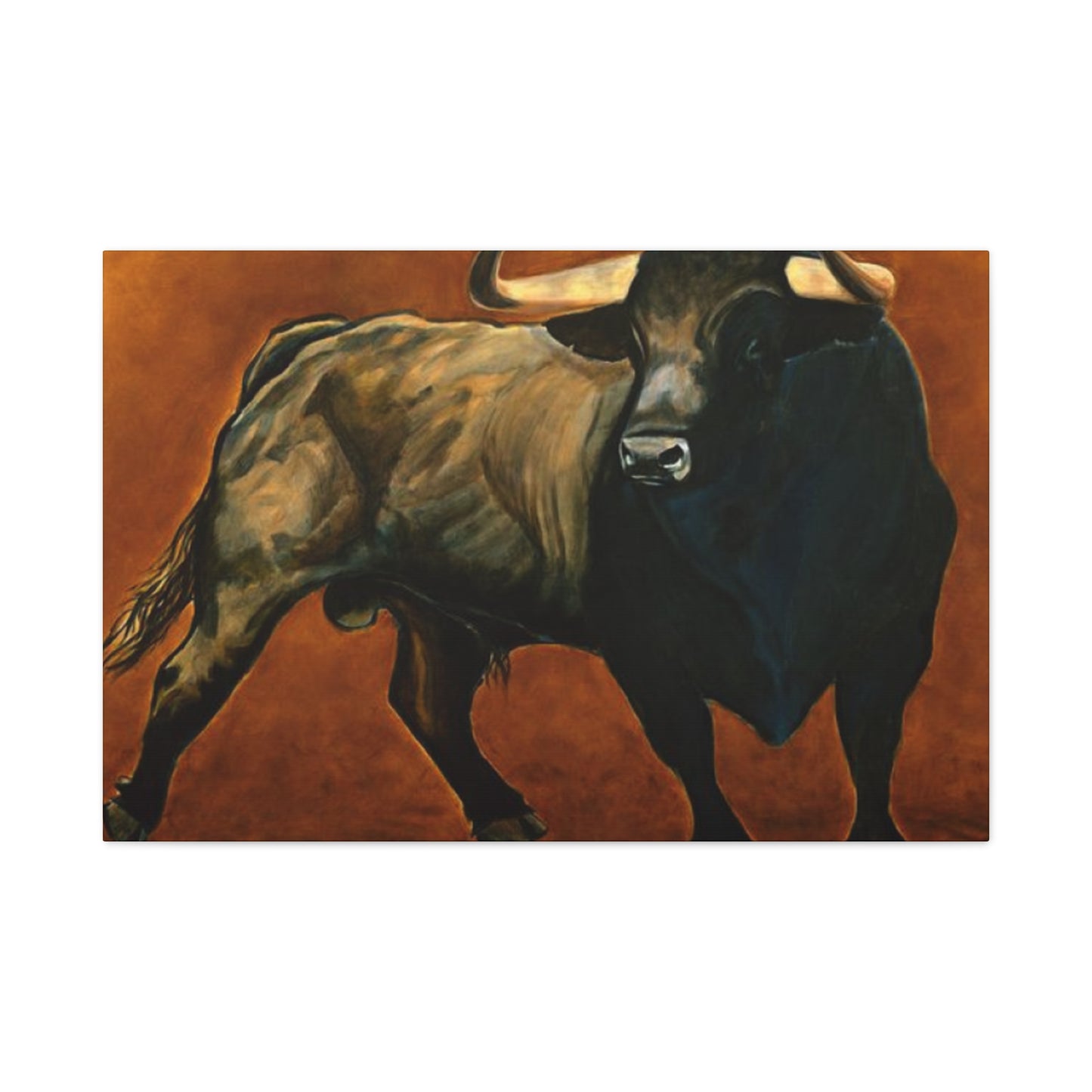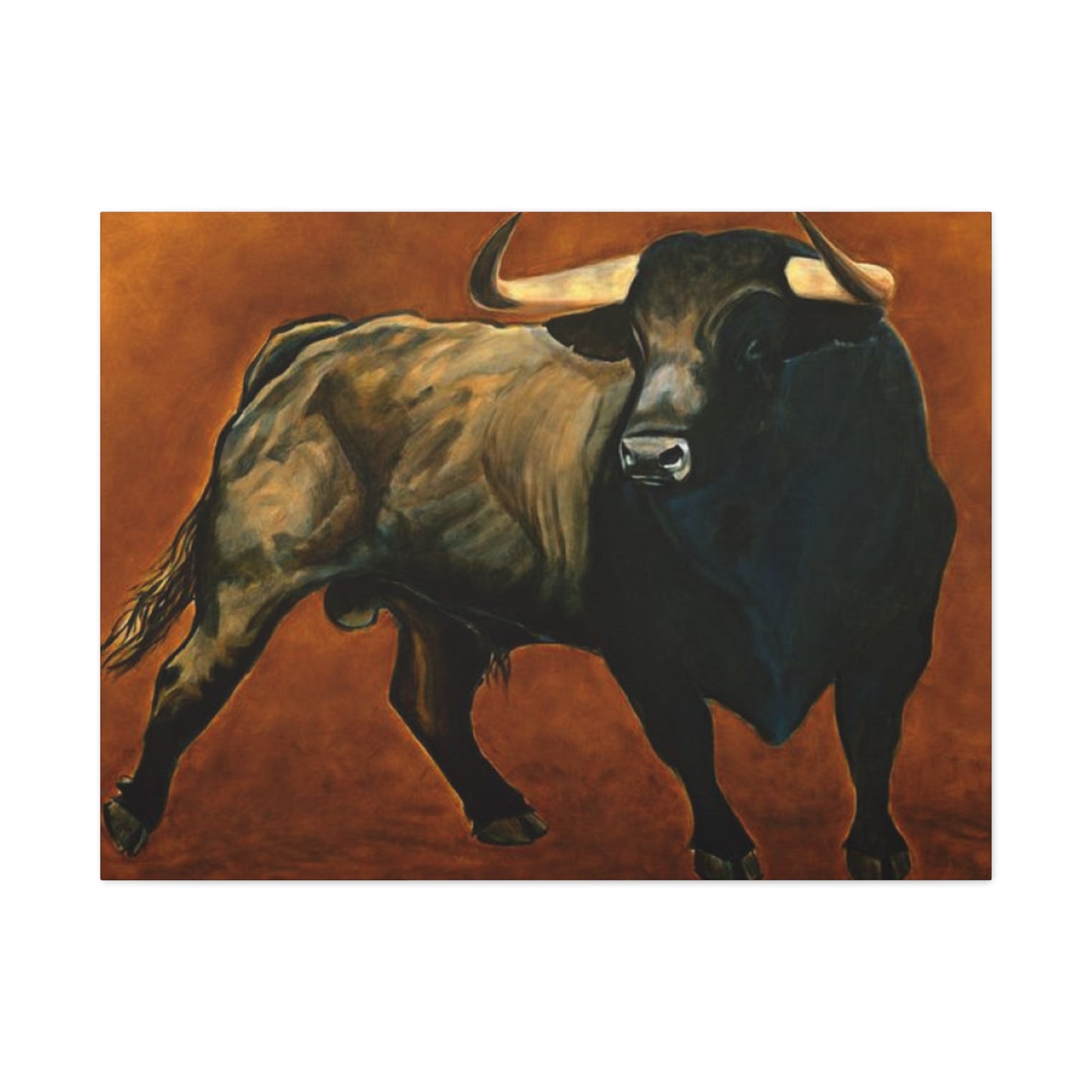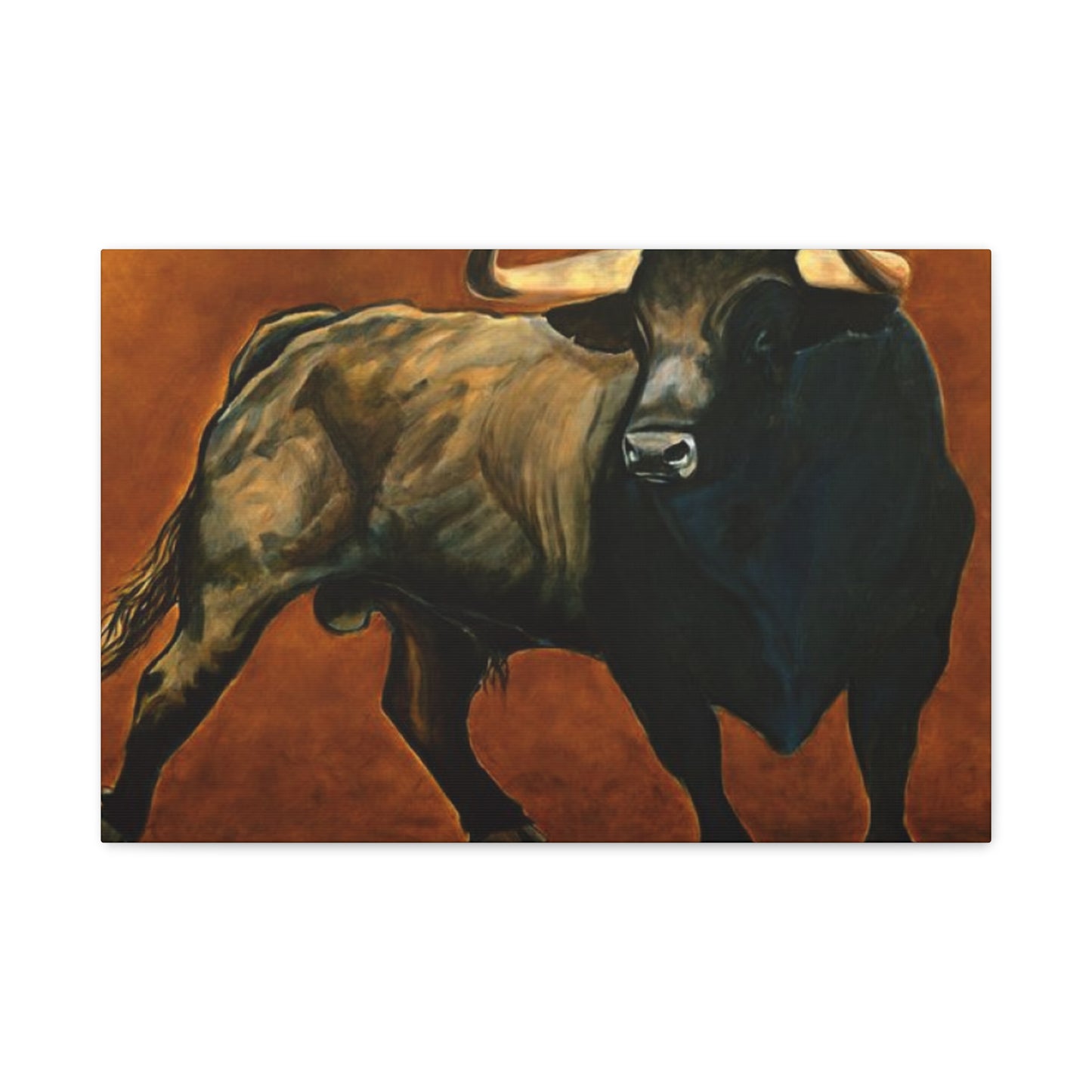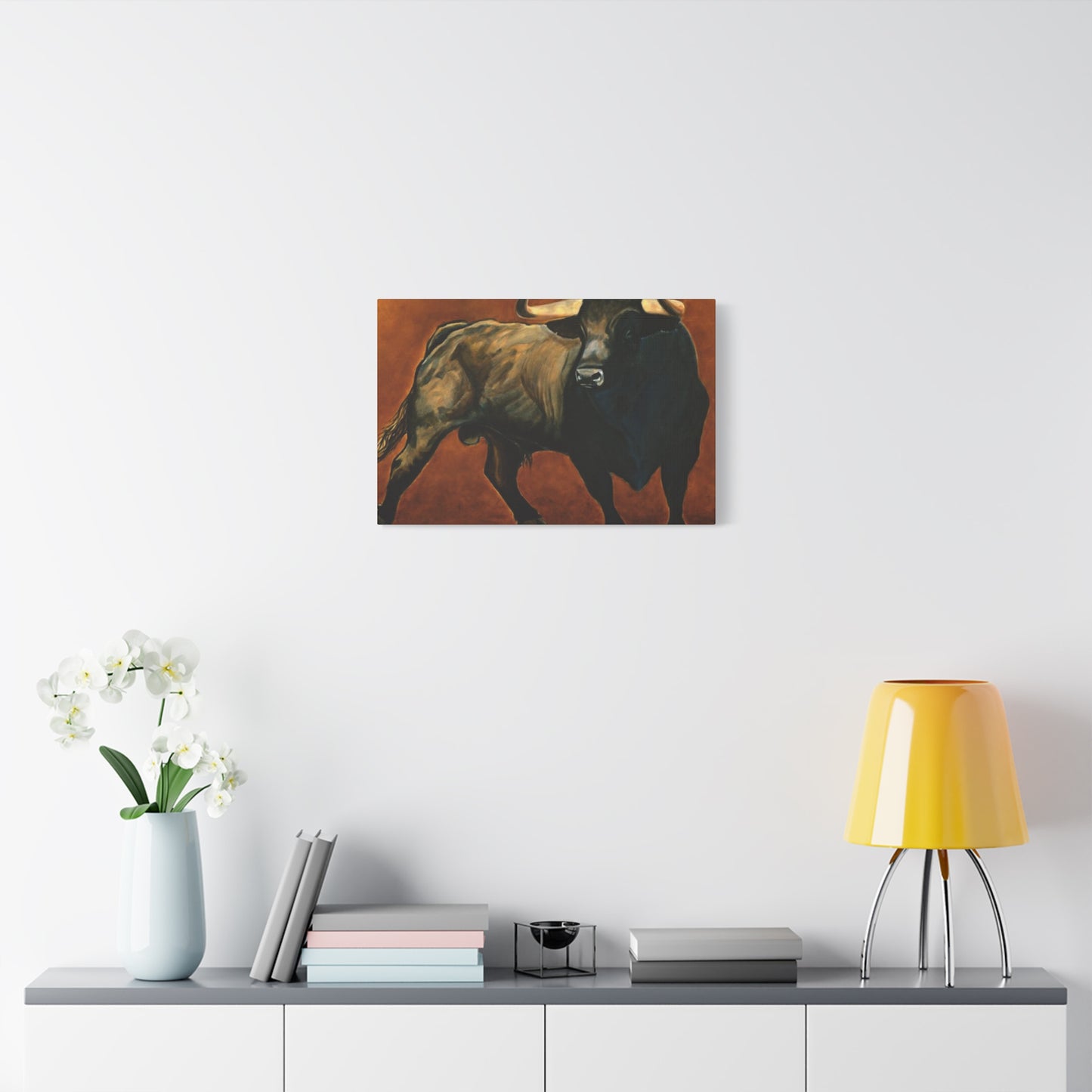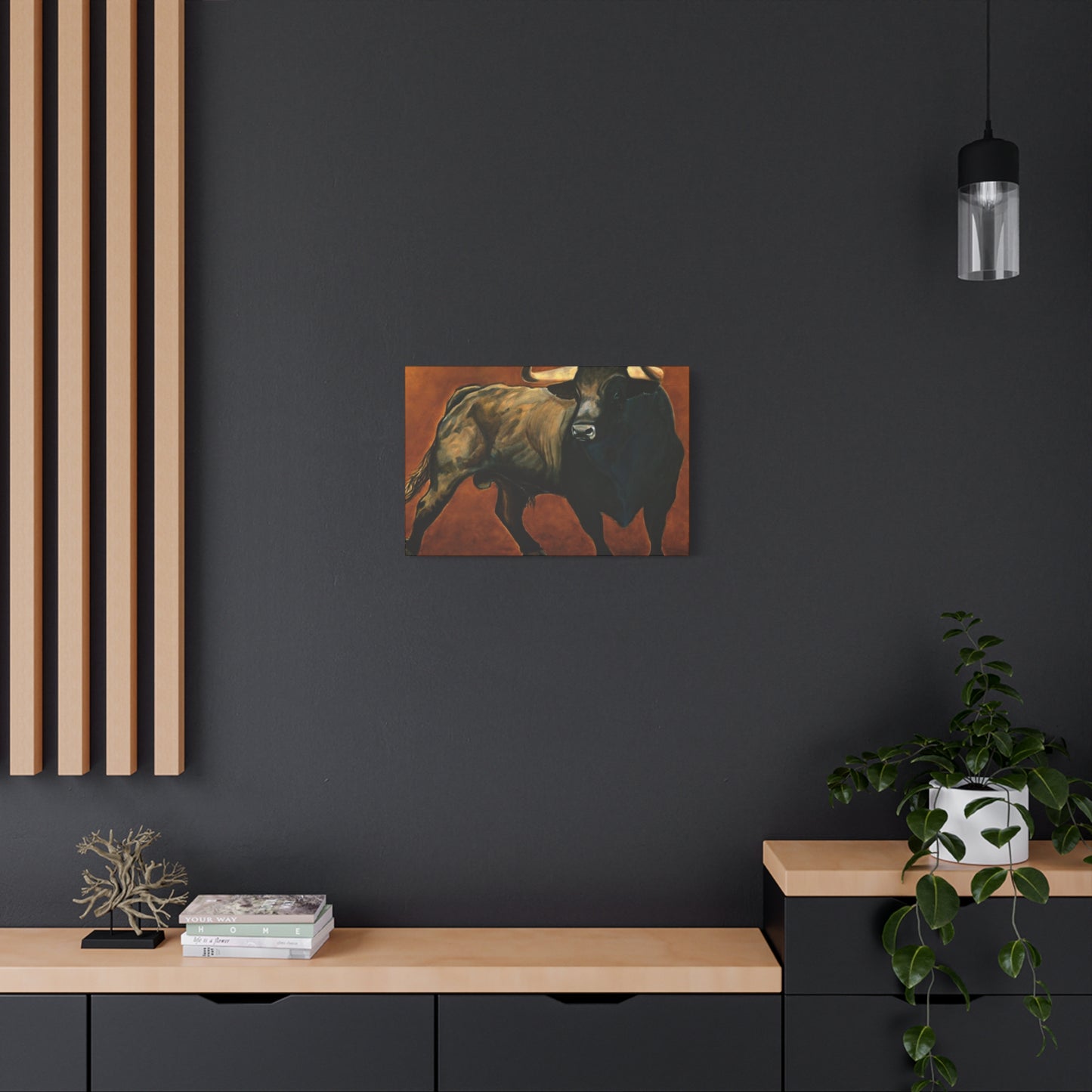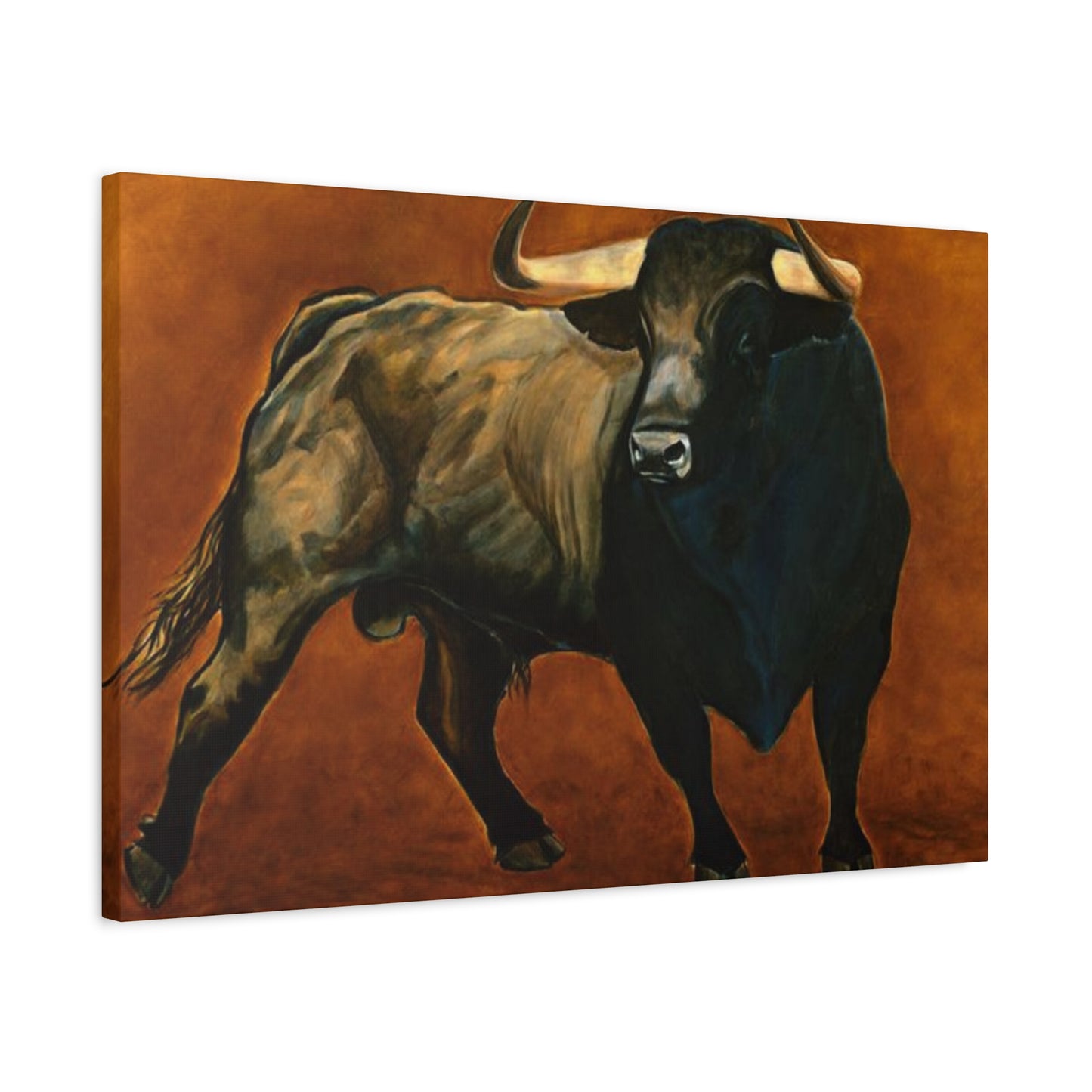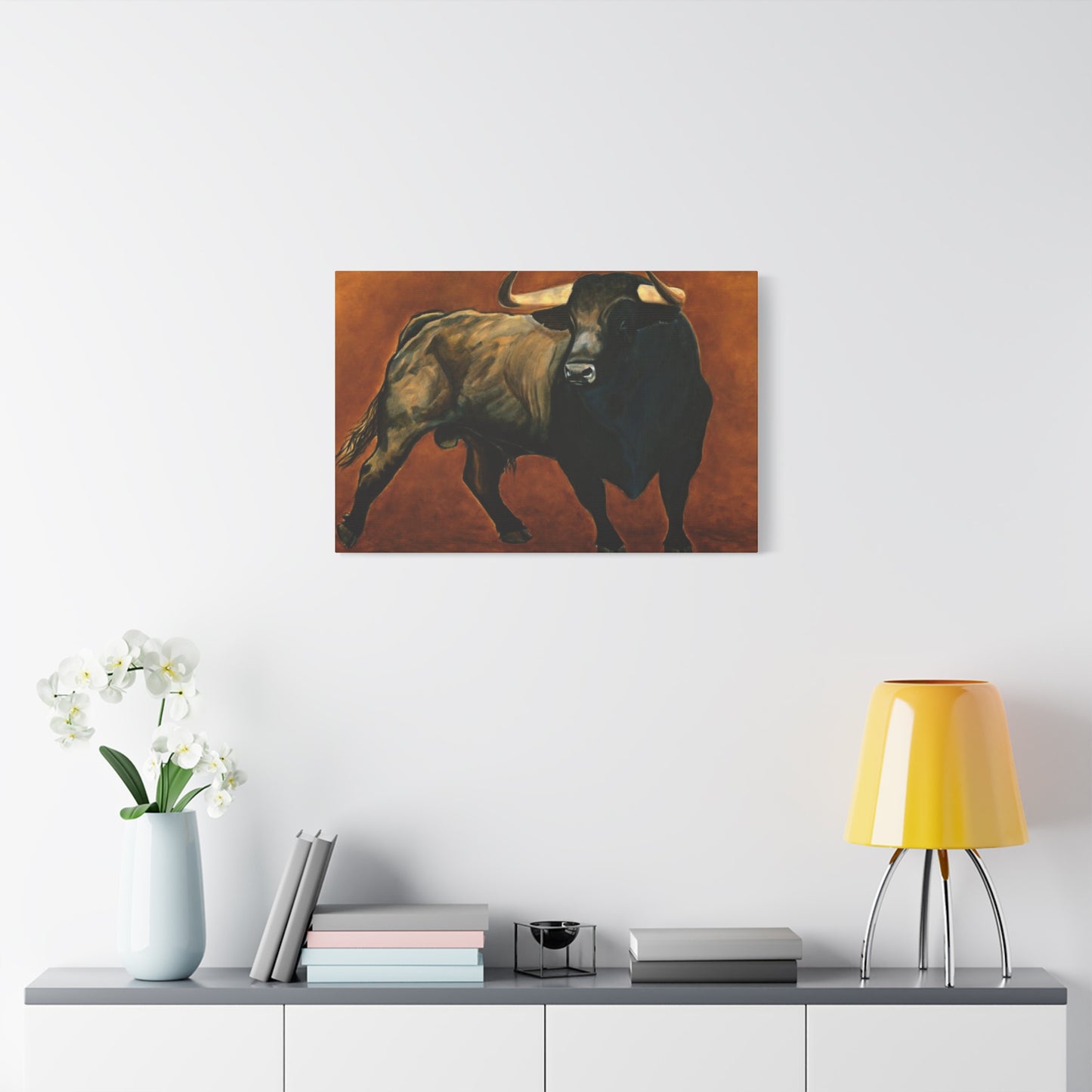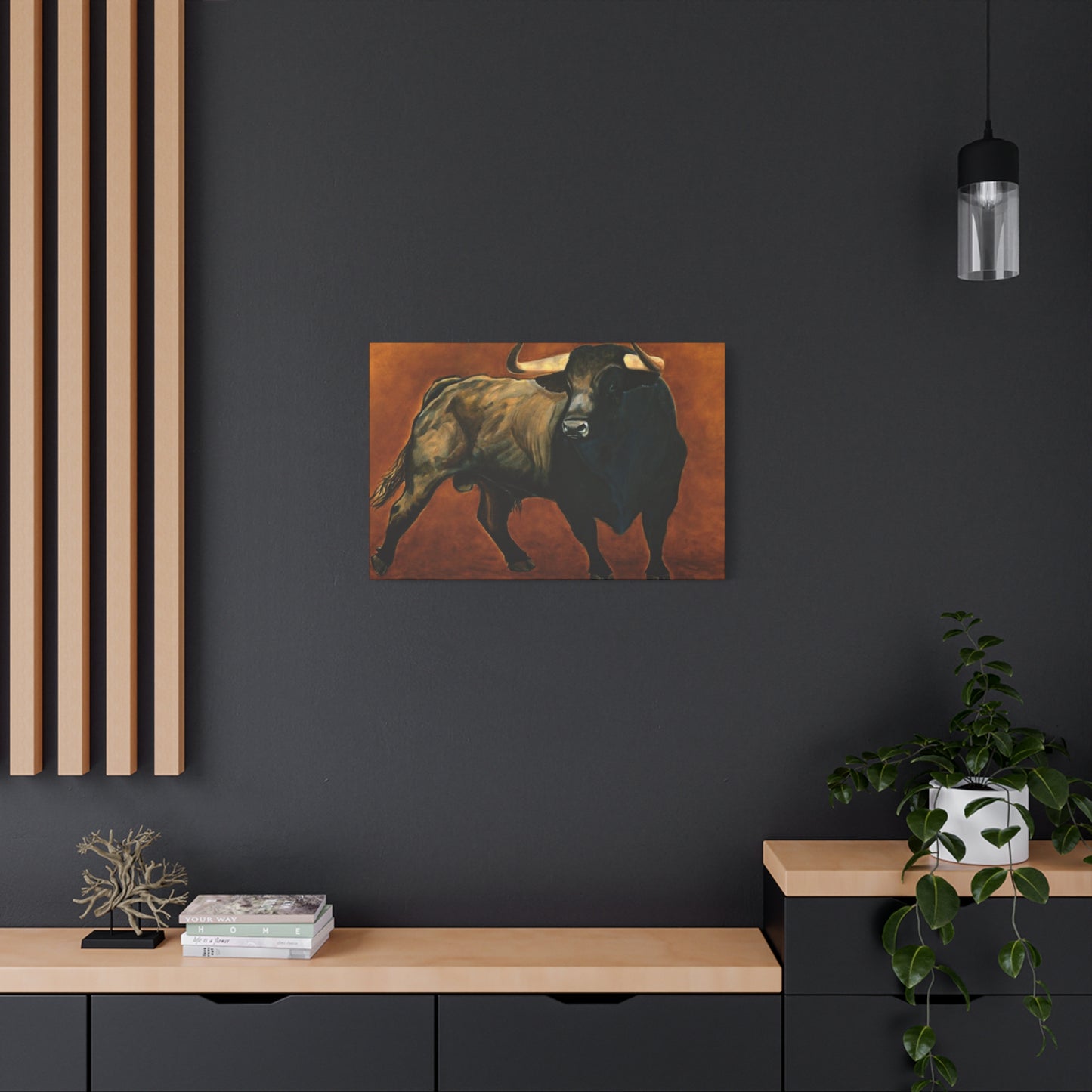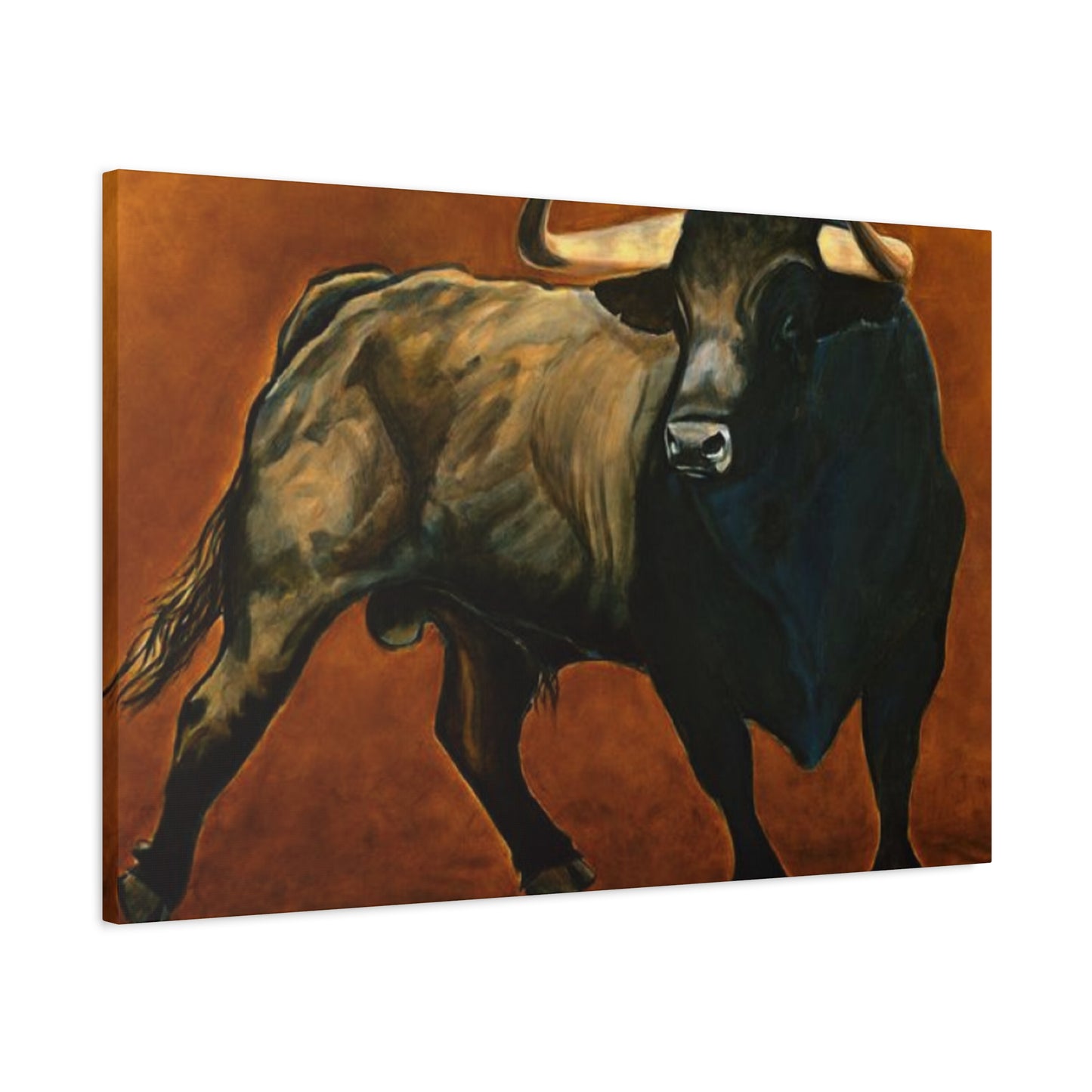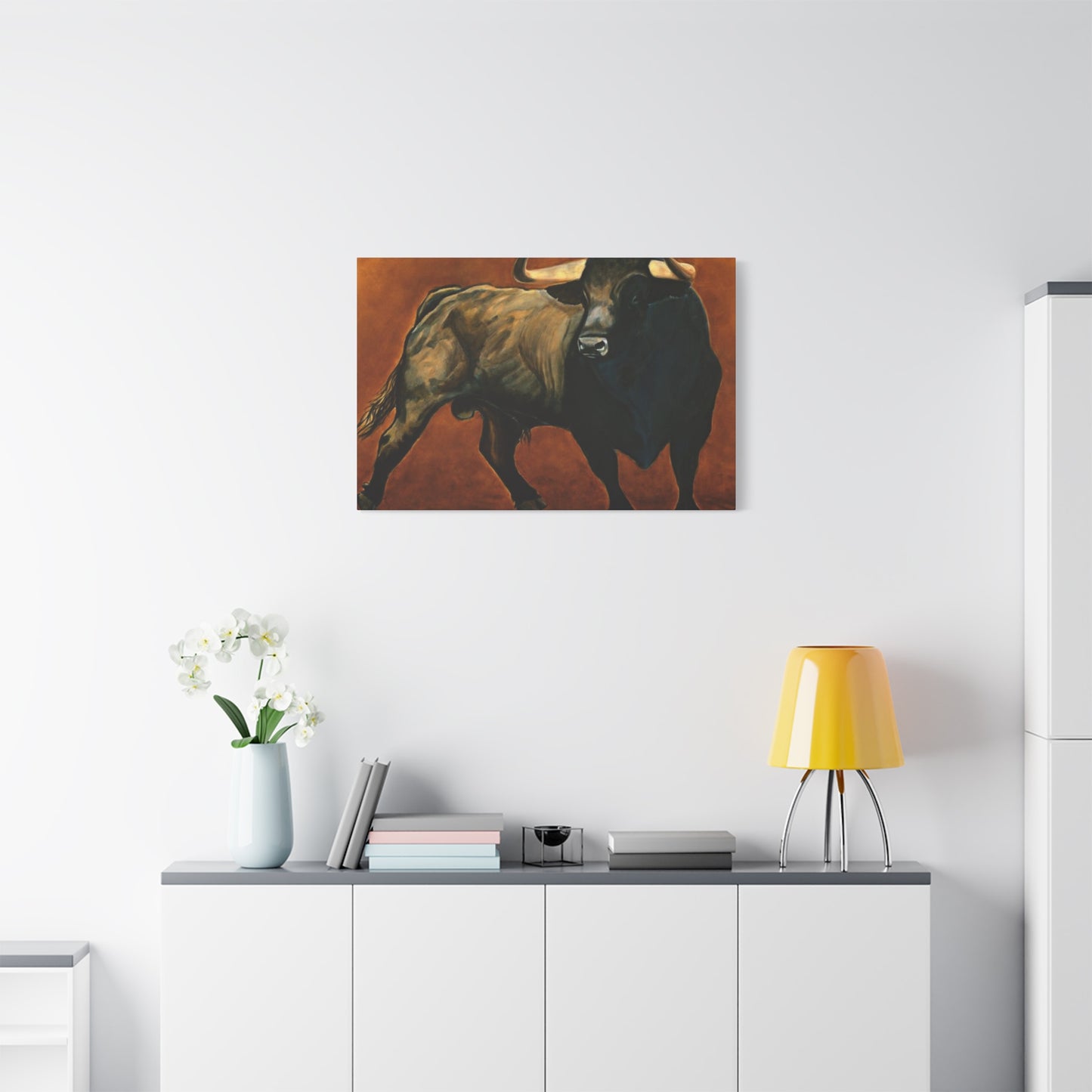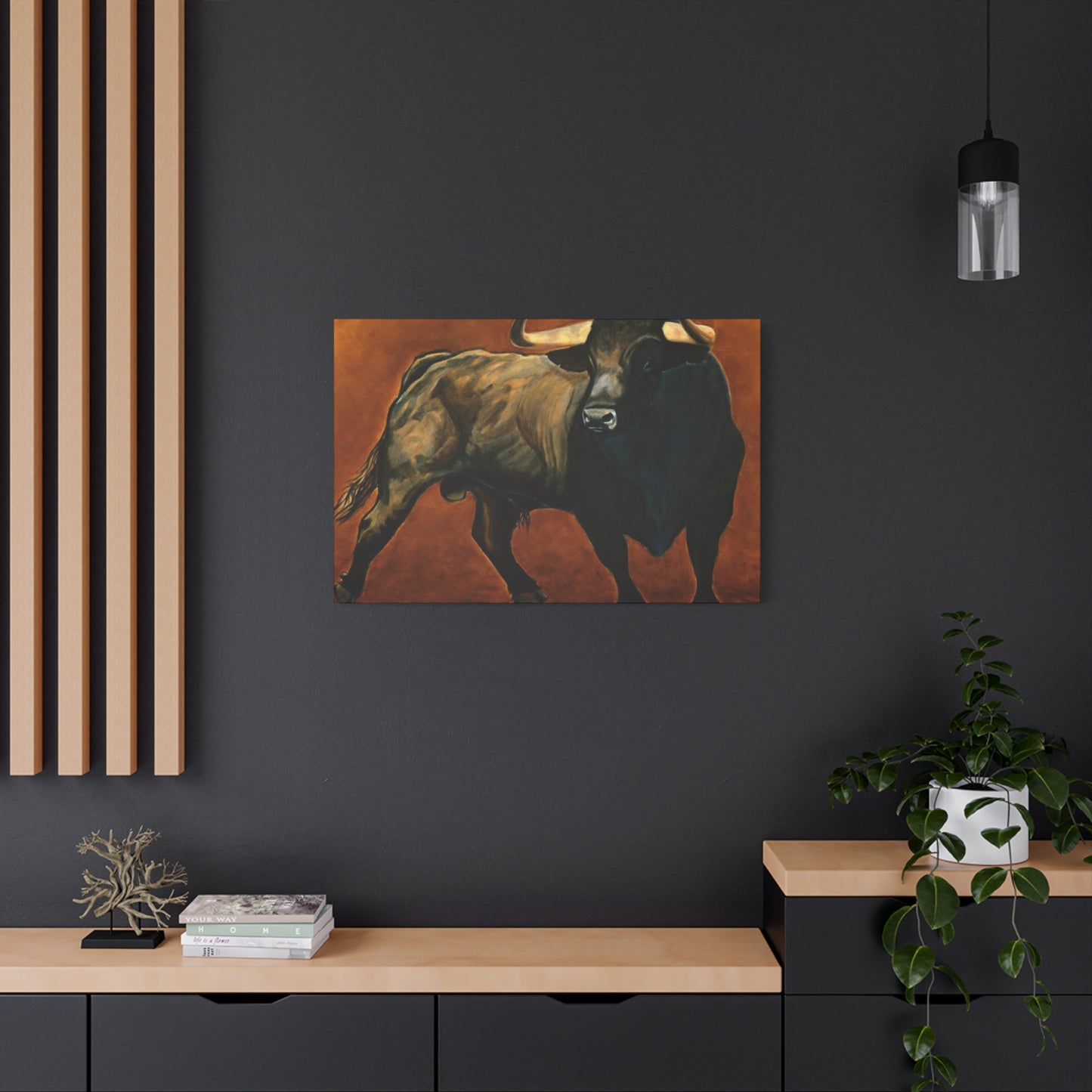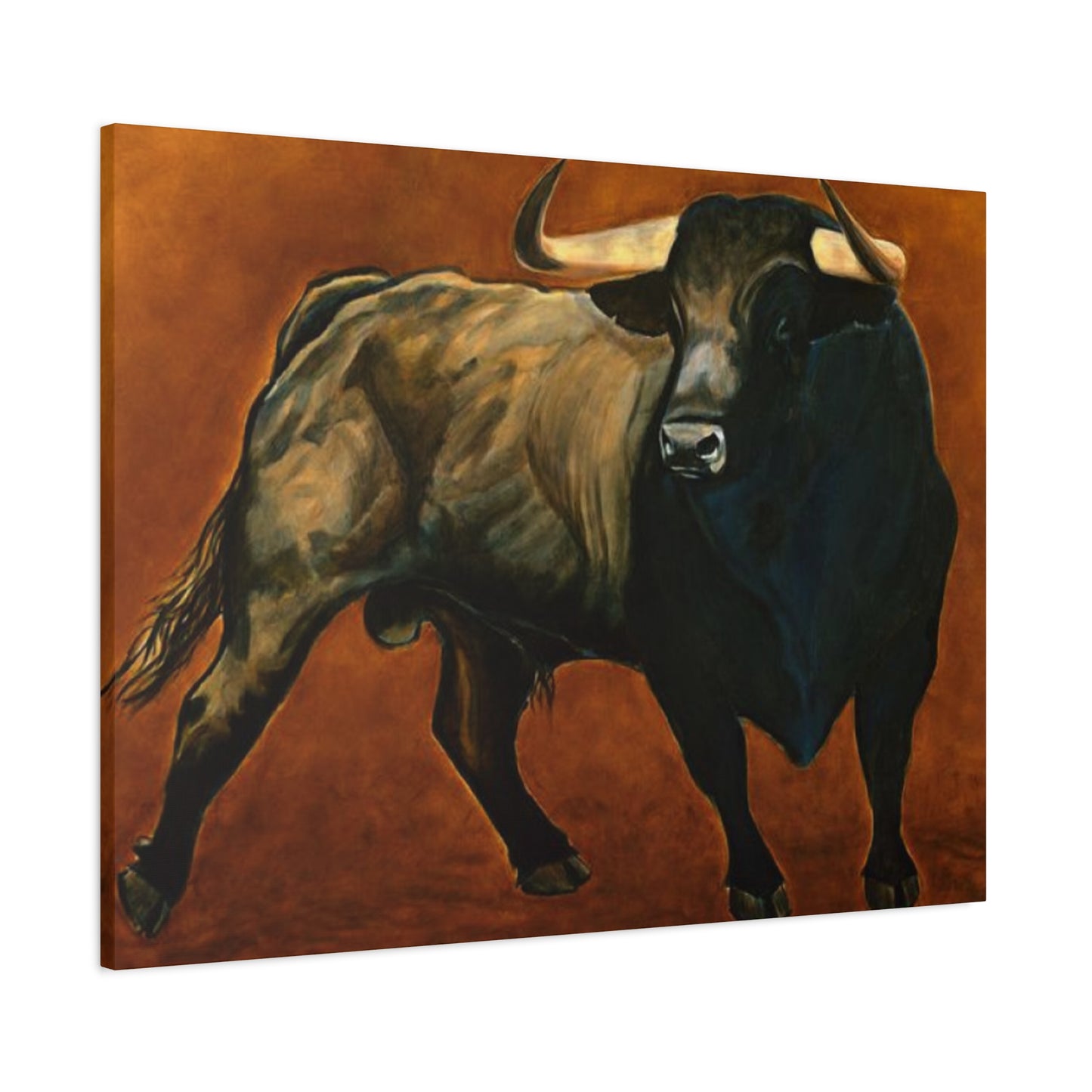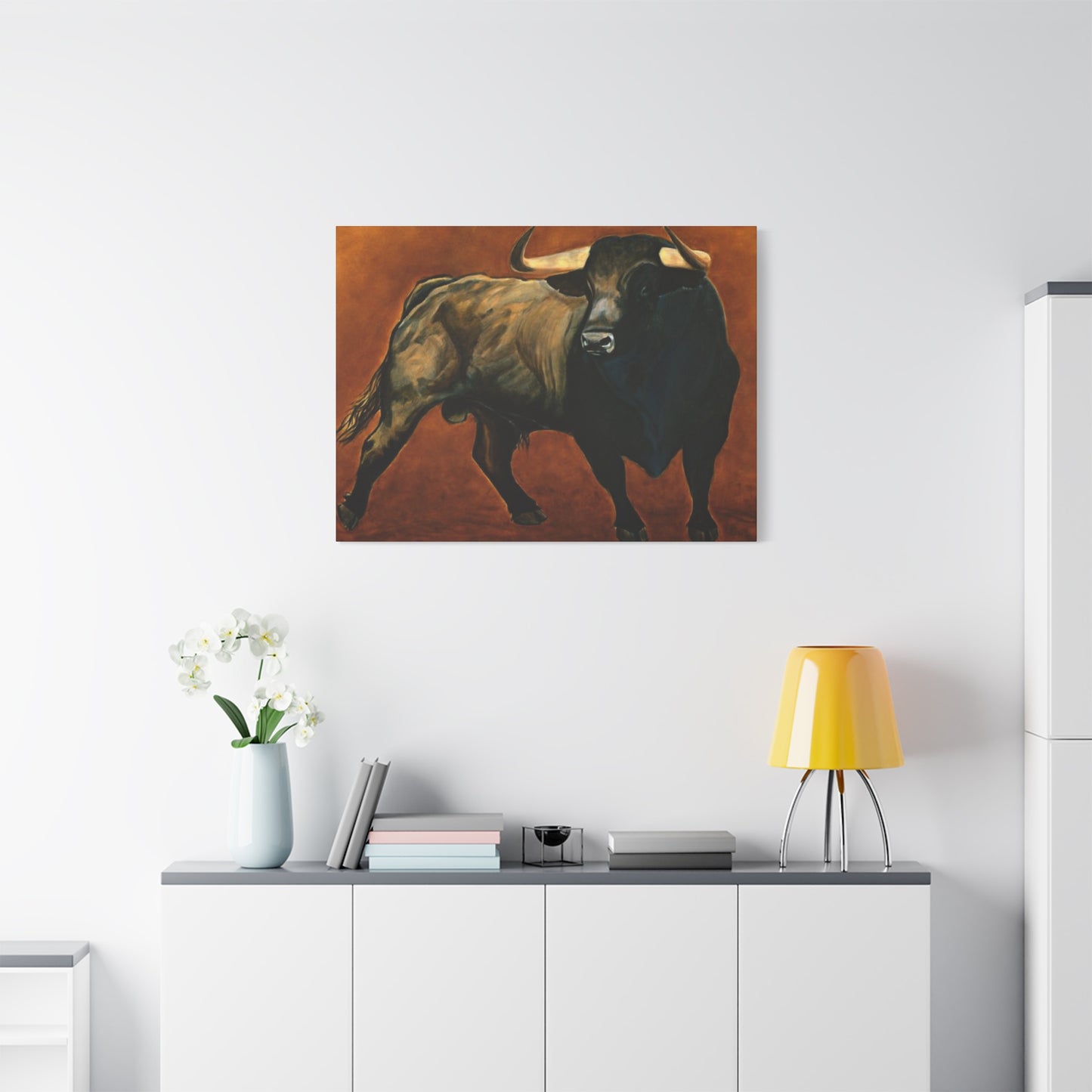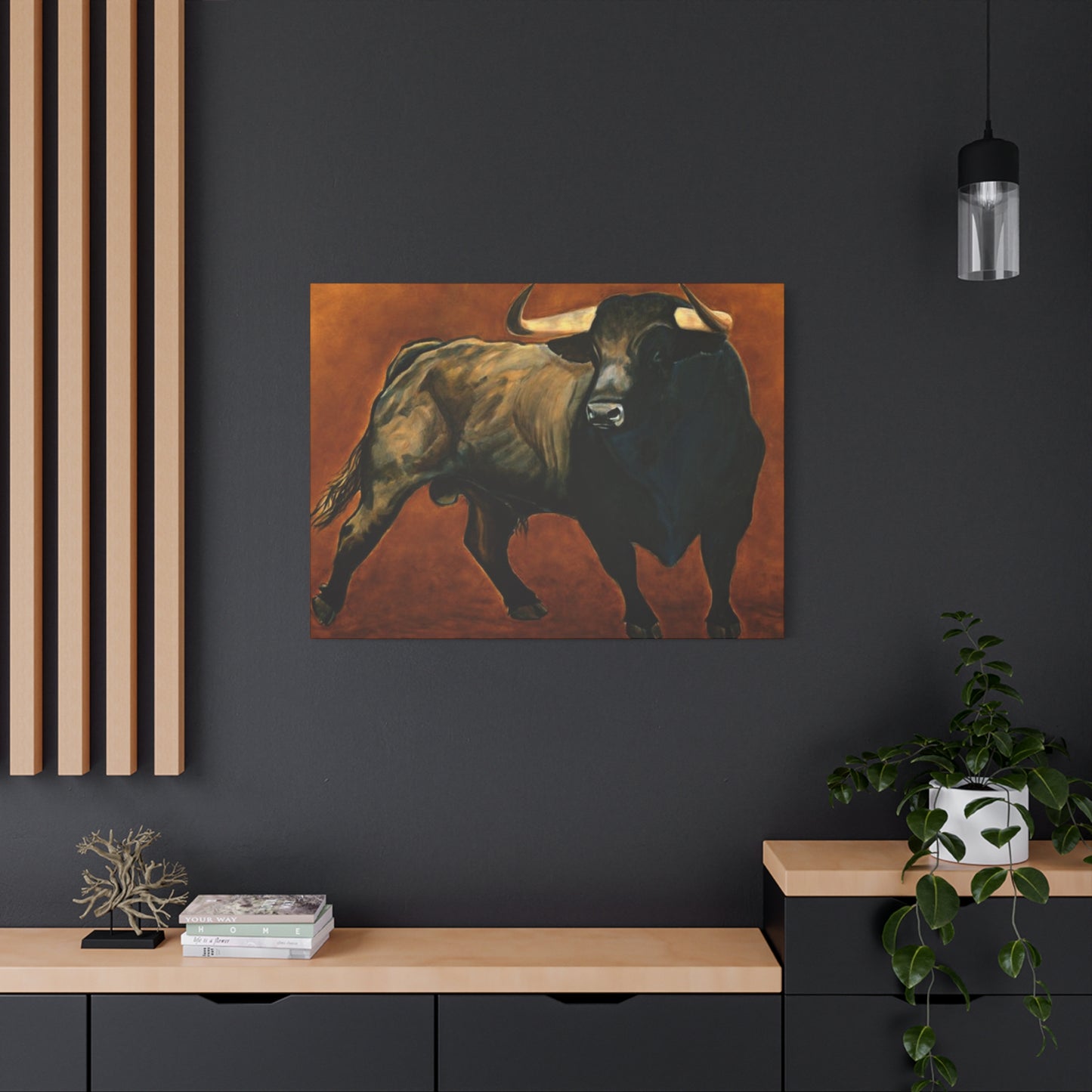Bold Beauty: Decorating with Hairy Black Bull Long Horns Wall Art
The magnificence of the black bull has captivated artists and collectors for centuries, representing power, strength, and untamed beauty. These remarkable creatures, with their commanding presence and striking silhouettes, have become iconic subjects in artistic expression. When transformed into stunning wall art pieces, black bulls bring an unmatched sense of drama and sophistication to any living environment.
The appeal of bull-themed artwork extends far beyond simple decoration. These pieces serve as powerful symbols of determination, resilience, and natural grace. Whether you're drawn to the rustic charm of western heritage or the raw beauty of wildlife imagery, black bull wall art offers a compelling way to express personal style while creating focal points that demand attention and admiration.
Contemporary artists have embraced the challenge of capturing these magnificent animals in various mediums, from traditional oil paintings to modern digital prints. The versatility of bull imagery allows for countless interpretations, each offering unique perspectives on these remarkable creatures. Some artists focus on photorealistic portrayals that showcase every detail of fur texture and horn curvature, while others prefer abstract interpretations that emphasize emotional impact over literal representation.
The growing popularity of animal-themed home décor has positioned black bull wall art as a sought-after category among collectors and homeowners alike. These pieces successfully bridge the gap between fine art and decorative accessories, offering both aesthetic appeal and cultural significance. The timeless nature of bull imagery ensures that these artworks remain relevant and captivating across changing design trends and personal tastes.
The Symbolic Power Behind Black Bull Imagery
Black bulls have held significant meaning across numerous cultures throughout history, representing various concepts from fertility and abundance to protection and strength. In ancient civilizations, bulls were often associated with deities and spiritual beliefs, making them powerful symbols that transcended mere animal representation. This rich cultural heritage adds depth and meaning to contemporary bull wall art, allowing viewers to connect with centuries of human fascination with these magnificent creatures.
The color black in bull imagery carries additional symbolic weight, often representing mystery, elegance, and sophistication. Black bulls are frequently portrayed as more imposing and dramatic than their lighter-colored counterparts, creating artwork that commands respect and attention. This natural gravitas makes black bull wall art particularly effective in settings where you want to establish a strong visual presence or convey themes of power and authority.
Modern interpretations of black bull symbolism often focus on themes of determination and perseverance. The bull's reputation for unwavering strength and persistence resonates with contemporary audiences seeking inspiration and motivation in their daily lives. When displayed prominently in homes or offices, these artworks serve as daily reminders of the value of determination and the importance of standing firm in the face of challenges.
The psychological impact of bull imagery should not be underestimated. Studies have shown that animal artwork can significantly influence mood and behavior, with powerful animal images like bulls often inspiring feelings of confidence and strength. This makes black bull wall art not just decoratively appealing but potentially beneficial for mental wellbeing and personal motivation.
Artists working with bull themes often emphasize the contrast between the animal's raw power and its natural grace. This duality creates compelling visual narratives that engage viewers on multiple levels. The combination of strength and beauty inherent in black bull imagery makes these pieces particularly effective at creating emotional connections with audiences while maintaining broad appeal across different demographics and design preferences.
Historical Significance of Bull Art in Western Culture
The tradition of depicting bulls in art traces back thousands of years, with cave paintings featuring these animals among the earliest known artistic expressions. Throughout history, bulls have appeared in religious ceremonies, cultural celebrations, and artistic traditions across diverse civilizations. This long-standing artistic heritage provides contemporary black bull wall art with a rich foundation of cultural significance and symbolic meaning.
In Western culture, bulls became particularly associated with frontier life and agricultural traditions. The American West, with its cattle ranching heritage, elevated the bull to iconic status as a symbol of the pioneering spirit and rugged individualism. This cultural connection makes black bull wall art especially resonant in Western-themed décor schemes, where these pieces can serve as authentic representations of regional heritage and cultural identity.
Spanish culture has perhaps the most famous relationship with bull imagery, through the tradition of bullfighting and the cultural celebrations surrounding it. Spanish artists have created countless masterpieces featuring bulls, establishing artistic techniques and stylistic approaches that continue to influence contemporary bull art. The dramatic tension and emotional intensity characteristic of Spanish bull art have become defining elements of the genre.
Native American cultures also hold bulls and buffalo in high regard, viewing them as sacred animals representing abundance and spiritual power. This cultural perspective adds another layer of meaning to bull wall art, particularly pieces that incorporate traditional Native American artistic elements or color schemes. The spiritual significance attributed to these animals by indigenous cultures enriches the symbolic value of contemporary bull artwork.
The evolution of bull imagery in American folk art reflects changing attitudes toward agriculture and rural life. As society became increasingly urbanized, bull art began to represent not just agricultural heritage but also a connection to simpler times and traditional values. This nostalgic element makes black bull wall art particularly appealing to modern audiences seeking to reconnect with their cultural roots or express appreciation for traditional ways of life.
Artistic Techniques in Black Bull Wall Art Creation
Creating compelling black bull wall art requires mastery of various artistic techniques that effectively capture both the physical characteristics and emotional essence of these magnificent animals. Artists must understand animal anatomy, texture rendering, and compositional principles to produce pieces that accurately represent bulls while creating strong visual impact.
One of the most challenging aspects of creating black bull artwork lies in rendering the animal's distinctive coat texture. Black fur requires careful attention to light and shadow relationships, as subtle variations in tone and highlight placement can dramatically affect the perceived texture and dimensionality of the piece. Master artists often employ multiple layering techniques, building up depth through careful color mixing and strategic brush work.
The portrayal of bull horns presents another technical challenge that separates exceptional bull art from mediocre attempts. Horns must be rendered with proper proportions and anatomical accuracy while serving as dynamic compositional elements that guide the viewer's eye through the artwork. The curve and positioning of horns can significantly impact the perceived mood and personality of the depicted bull.
Contemporary artists have embraced digital techniques alongside traditional methods, creating hybrid approaches that combine the best of both worlds. Digital tools allow for precise detail work and easy experimentation with color schemes and compositional arrangements, while traditional painting techniques provide texture and authenticity that digital methods alone cannot achieve. This fusion of approaches has expanded the possibilities for black bull wall art creation.
Mixed media techniques have become increasingly popular among bull art creators, incorporating elements like textured papers, fabric, metal accents, or three-dimensional components. These approaches add tactile qualities to bull artwork, making pieces more engaging and interactive for viewers. The incorporation of mixed media elements can also help establish thematic connections to Western culture through the use of materials like weathered wood or rustic metal.
Abstract interpretations of black bull imagery require different technical approaches focused on capturing emotional essence rather than photographic accuracy. These pieces often emphasize bold geometric shapes, dramatic color contrasts, and simplified forms that distill the bull's presence to its most essential visual elements. Success in abstract bull art depends on the artist's ability to maintain recognizability while pushing creative boundaries.
Different Styles and Approaches to Bull Wall Art
The diversity of artistic styles available in black bull wall art ensures that collectors can find pieces that align with their personal aesthetic preferences and décor themes. From hyperrealistic portraits that capture every detail of fur and horn to minimalist silhouettes that emphasize essential forms, the range of available approaches accommodates various tastes and design requirements.
Photorealistic bull art represents the pinnacle of technical achievement in animal portraiture, requiring exceptional skill in observation and rendering techniques. These pieces often focus on capturing specific moments or expressions, creating artwork that appears almost photographic in its precision and detail. The emotional impact of photorealistic bull art comes from its ability to make viewers feel as though they are in the presence of the actual animal.
Impressionistic approaches to bull art emphasize mood and atmosphere over precise detail, using loose brushwork and expressive color choices to convey the essence of the subject. These pieces often feature dynamic paint application and bold color relationships that create sense of movement and energy. Impressionistic bull art works particularly well in contemporary settings where traditional realistic artwork might feel too formal or static.
Western-themed bull art incorporates elements of frontier culture and ranching heritage, often featuring rustic color palettes, weathered textures, and compositional elements that reference the American West. These pieces might include landscape backgrounds, vintage ranch equipment, or other cultural symbols that reinforce the connection between bulls and Western heritage. The authenticity of Western-themed bull art depends on the artist's understanding of regional culture and historical accuracy.
Modern abstract interpretations of bull imagery focus on distilling the animal's essence into geometric forms, bold color relationships, and simplified shapes. These approaches often emphasize the emotional impact of bull imagery rather than literal representation, creating pieces that work well in contemporary settings where traditional animal art might feel out of place. Abstract bull art can be particularly effective in minimalist décor schemes where bold focal points are needed.
Pop art approaches to bull imagery incorporate bright colors, graphic elements, and contemporary cultural references to create pieces that feel fresh and relevant to modern audiences. These artworks might feature unexpected color combinations, repeated imagery, or integration with popular culture symbols. Pop art bull pieces often work well in casual settings where traditional Western art might feel too serious or formal.
Materials and Mediums Used in Bull Artwork
The choice of materials and mediums significantly impacts both the appearance and longevity of black bull wall art, with different options offering unique advantages for various applications and aesthetic preferences. Traditional oil paints remain popular among serious artists due to their rich color saturation, blendability, and archival qualities that ensure artwork maintains its appearance over time.
Canvas remains the most common support material for bull paintings, offering excellent paint adhesion and a texture that complements the organic nature of animal subjects. High-quality cotton or linen canvases provide stable foundations that resist stretching and warping over time, ensuring that bull artwork maintains its intended appearance throughout its lifespan. The texture of canvas can also contribute to the perceived authenticity of Western-themed bull pieces.
Watercolor techniques create unique effects in bull artwork, allowing for transparent layers and subtle color transitions that can effectively capture the nuanced tones found in black fur. The unpredictable nature of watercolor can add spontaneity and energy to bull pieces, though it requires significant skill to control the medium effectively. Watercolor bull art often has a softer, more ethereal quality compared to oil or acrylic alternatives.
Digital printing technologies have revolutionized the accessibility of high-quality bull wall art, allowing for precise color reproduction and consistent quality across multiple copies. Modern archival inks and papers ensure that digital prints maintain their color integrity for decades when properly cared for. Digital reproduction also makes it possible to offer bull artwork in various sizes and formats to accommodate different décor requirements.
Metal prints have emerged as a popular option for contemporary bull artwork, offering exceptional durability and a modern aesthetic that works well in industrial or contemporary settings. The reflective surface of metal prints can add depth and luminosity to bull imagery, creating pieces that change appearance based on viewing angle and lighting conditions. Metal prints are particularly effective for abstract or modern interpretations of bull themes.
Wood substrates provide rustic charm that perfectly complements Western-themed bull artwork, offering natural texture and color variations that enhance the authentic feel of ranch and frontier imagery. Different wood species provide varying grain patterns and color tones that can be selected to complement specific artistic styles or color schemes. Wood-mounted bull art often feels more substantial and permanent than traditional canvas pieces.
Color Theory and Palette Choices in Bull Art
Effective use of color theory transforms ordinary bull artwork into compelling visual experiences that engage viewers and create lasting emotional connections. The predominantly black coloration of bull subjects presents both challenges and opportunities for artists seeking to create visually interesting and emotionally resonant pieces.
Working with black as a primary color requires sophisticated understanding of warm and cool undertones, as pure black rarely exists in nature. Successful black bull artwork incorporates subtle color variations that suggest reflected light, environmental influences, and surface texture variations. Artists might include hints of brown, blue, or purple to create more naturalistic and visually interesting black fur representations.
Complementary color schemes often prove effective in bull artwork, using colors opposite black on the color wheel to create visual contrast and energy. Orange, yellow, and red tones can create dramatic backgrounds or accent elements that make black bull subjects appear more prominent and compelling. These warm color relationships also reinforce connections to Western heritage and rustic themes.
Earth tone palettes naturally complement black bull subjects, creating cohesive color schemes that feel authentic and grounded. Browns, tans, and muted greens work harmoniously with black to create artwork that integrates seamlessly into rustic or traditional décor schemes. These natural color relationships feel comfortable and familiar to viewers, making the artwork more accessible and appealing.
Monochromatic approaches focusing on variations of black, white, and gray can create sophisticated and elegant bull artwork that works well in contemporary settings. These limited palettes emphasize form, texture, and composition while maintaining visual cohesion. Monochromatic bull art often feels more formal and artistic compared to pieces using broader color ranges.
Dramatic lighting effects in bull artwork often rely on strong value contrasts between light and dark areas, creating pieces with significant visual impact and emotional intensity. Strategic use of bright highlights against predominantly dark compositions can create focal points that draw attention to specific features like eyes or horn tips. These high-contrast approaches work particularly well for creating statement pieces intended as room focal points.
Composition and Visual Impact Techniques
Masterful composition transforms black bull wall art from simple animal portraits into compelling visual narratives that engage viewers and create memorable experiences. Understanding fundamental composition principles allows artists to guide viewer attention, establish mood, and create balanced arrangements that feel both natural and intentionally crafted.
The rule of thirds provides a reliable foundation for bull artwork composition, positioning key elements like eyes or horn tips along imaginary grid lines that create visually pleasing and balanced arrangements. This principle helps prevent static, centered compositions while ensuring that important features receive appropriate visual emphasis. Strategic placement of the bull within the composition can significantly impact the perceived energy and movement of the piece.
Leading lines created by horn curves, body contours, or background elements can effectively guide viewer attention through bull artwork, creating visual paths that enhance engagement and understanding. These compositional devices help establish visual hierarchy while ensuring that viewers experience the artwork in the intended sequence. Skillful use of leading lines can also create sense of movement and energy even in static compositions.
Scale relationships between the bull subject and surrounding elements significantly impact the perceived power and presence of the artwork. Large-scale bull subjects that fill most of the composition create intimate, powerful viewing experiences, while smaller subjects positioned within larger environments can emphasize the relationship between the animal and its habitat. Artists must carefully consider how scale choices affect the emotional impact of their work.
Negative composition plays a crucial role in bull artwork, with empty areas providing visual rest and helping to define the positive forms of the bull subject. Strategic use of negative areas can enhance the perceived size and importance of the bull while preventing compositions from feeling cramped or overwhelming. The balance between positive and negative areas requires careful consideration and skillful execution.
Focal point establishment ensures that viewers immediately understand the most important elements of bull artwork, typically centering attention on facial features, particularly the eyes. Secondary focal points might include distinctive horn formations or textural details that support the primary focus without competing for attention. Clear focal point hierarchy creates more engaging and memorable viewing experiences.
The Role of Texture in Black Bull Wall Art
Texture plays a fundamental role in creating convincing and engaging black bull wall art, with surface quality variations helping to differentiate between fur, horn, and other anatomical features while adding visual interest and tactile appeal to finished pieces. Master artists understand how to use both actual and implied texture to enhance the realism and emotional impact of their work.
Fur texture representation requires careful observation of how light interacts with individual hairs and hair groupings, creating patterns of highlight and shadow that suggest three-dimensional form and surface quality. Different brush techniques, including dry brushing, scumbling, and directional strokes, can effectively simulate various fur textures and densities found across different areas of the bull's body.
Horn texture presents different challenges, requiring artists to capture the smooth, polished surface quality while suggesting the underlying bone structure and natural growth patterns. Careful attention to reflected light and subtle color variations helps create convincing horn representations that feel solid and substantial. The contrast between smooth horn surfaces and textured fur areas adds visual interest and authenticity to bull artwork.
Background texture choices significantly impact the overall feel and success of bull artwork, with different approaches serving various artistic and decorative purposes. Smooth, minimal backgrounds emphasize the bull subject and create contemporary feels, while heavily textured backgrounds can suggest environmental context and enhance rustic or traditional aesthetics. The relationship between foreground and background textures requires careful balancing to maintain visual hierarchy.
Physical texture can be incorporated into bull artwork through impasto techniques, mixed media additions, or specialized painting methods that create actual surface variations. These three-dimensional elements add tactile interest and can help distinguish professional-quality artwork from reproduction prints. Physical texture also creates changing visual effects as lighting conditions vary throughout the day.
Digital texture techniques allow contemporary artists to experiment with surface qualities that might be difficult or impossible to achieve through traditional methods. Layering different digital textures, adjusting transparency levels, and combining multiple texture sources can create complex surface effects that enhance the visual appeal and uniqueness of digital bull artwork.
Size Considerations for Bull Wall Art Display
Selecting appropriate sizes for black bull wall art requires careful consideration of room dimensions, viewing distances, furniture arrangements, and intended visual impact. The scale of artwork significantly affects both its decorative effectiveness and its ability to create desired emotional responses from viewers.
Large-scale bull artwork, typically measuring 36 inches or larger in at least one dimension, creates dramatic focal points that can anchor entire room designs and establish strong visual themes. These pieces work best in rooms with adequate wall availability and sufficient viewing distances to allow proper appreciation of details and overall composition. Large bull art can effectively fill empty wall areas above furniture groupings or in entrance areas where immediate impact is desired.
Medium-sized pieces, ranging from 18 to 36 inches, offer versatility for various display applications while maintaining significant visual presence. These dimensions work well above mantels, in dining areas, or as part of gallery wall arrangements where multiple pieces create cohesive displays. Medium-sized bull artwork often provides the best balance between impact and adaptability for most residential applications.
Small bull artwork, under 18 inches, works effectively in intimate settings, grouped arrangements, or locations where available wall space is limited. These pieces can add thematic consistency to larger décor schemes without overwhelming smaller rooms or competing with architectural features. Small bull pieces often work well in offices, bathrooms, or hallway displays where larger artwork would feel inappropriate.
Proportional relationships between artwork size and furniture dimensions help create balanced and harmonious room arrangements. Bull artwork should generally be sized to complement rather than overwhelm adjacent furniture pieces, with optimal width typically falling between two-thirds and three-quarters of the underlying furniture width. These proportional guidelines help ensure that artwork feels integrated rather than awkwardly positioned.
Viewing distance considerations affect both size selection and detail level requirements in bull artwork. Pieces intended for close viewing can include fine details and subtle color variations that reward careful examination, while artwork meant for distance viewing should emphasize bold forms and strong contrasts that remain effective from across the room. Understanding intended viewing distances helps optimize both artistic approach and size selection.
Framing and Presentation Options
Proper framing significantly enhances the appearance and longevity of black bull wall art while providing opportunities to customize pieces to match specific décor themes and personal preferences. Frame selection involves considerations of style, material, color, and conservation requirements that collectively impact both aesthetic appeal and artwork protection.
Traditional wooden frames offer timeless appeal that complements the natural themes inherent in bull artwork, with different wood species and finish options providing various aesthetic effects. Dark woods like walnut or ebony create sophisticated looks that complement black bull subjects, while lighter woods like oak or pine enhance rustic or casual themes. Wood grain patterns and distressing techniques can reinforce Western heritage themes in appropriate settings.
Metal frames provide contemporary styling that works particularly well with modern interpretations of bull imagery, offering clean lines and minimal visual distraction from the artwork itself. Black metal frames create sophisticated presentations that complement black bull subjects, while bronze or copper finishes can add warmth and enhance Western themes. Metal frames also provide excellent durability and dimensional stability over time.
Matting options significantly impact the visual presentation of bull artwork, providing color transition areas between the artwork and frame while creating breathing room that prevents pieces from feeling cramped or confined. Neutral mat colors like cream, gray, or tan work effectively with most bull artwork, while colored mats can enhance specific elements within the piece or create thematic connections to room décor.
Conservation framing techniques protect valuable bull artwork from environmental damage while ensuring long-term color stability and structural integrity. Acid-free mats, UV-protective glazing, and proper backing materials prevent deterioration while maintaining optimal display quality. Conservation framing represents a worthwhile investment for original artwork or high-quality reproduction pieces intended for long-term display.
Floating frame presentations create contemporary looks that work particularly well with canvas or panel-mounted bull artwork, allowing the edges of the artwork to remain visible while providing necessary protection and mounting stability. These presentations often feel more casual and accessible compared to traditional matted and framed approaches, making them suitable for contemporary or industrial décor themes.
Placement Strategies for Maximum Visual Impact
Strategic placement of black bull wall art transforms ordinary room arrangements into compelling visual experiences that effectively showcase artwork while enhancing overall décor themes. Successful placement requires understanding of sight lines, lighting conditions, furniture relationships, and human traffic patterns within living areas.
Eye-level positioning ensures that bull artwork remains easily visible and engaging for most viewers, with center points typically placed between 57 and 60 inches from floor level. This standard height works well for most residential applications, though adjustments might be necessary in rooms with unusual furniture arrangements or when artwork is intended primarily for seated viewing. Consistent height placement throughout a area creates visual harmony and professional appearance.
Lighting considerations significantly impact the effectiveness of bull artwork display, with proper illumination enhancing colors, textures, and details while preventing glare or reflection problems. Natural light can beautifully illuminate bull artwork during daytime hours, though direct sunlight should be avoided to prevent fading and damage. Adjustable accent lighting allows for optimal illumination control throughout different times and seasons.
Furniture relationships affect both the visual integration and practical success of bull artwork placement, with pieces positioned to complement rather than compete with surrounding furnishings. Artwork should maintain appropriate scale relationships with underlying furniture while creating visual connections that unify room arrangements. Proper spacing between artwork and furniture prevents pieces from feeling disconnected or awkwardly positioned.
Traffic flow considerations ensure that bull artwork remains visible and appreciated without interfering with normal room usage patterns. Pieces should be positioned where they can be comfortably viewed without blocking doorways or creating navigation obstacles. High-traffic areas often benefit from smaller pieces or those with durable frames that can withstand occasional contact.
Architectural feature integration helps bull artwork feel naturally incorporated into room designs rather than appearing as afterthoughts or additions. Positioning pieces to complement windows, doorways, built-in features, or structural elements creates visual harmony while making efficient use of available wall areas. Understanding architectural rhythms and proportions helps guide optimal placement decisions.
Creating Gallery Walls with Bull-Themed Art
Gallery wall arrangements offer exciting opportunities to showcase multiple black bull wall art pieces while creating dynamic visual displays that serve as major room focal points. Successful gallery walls require careful planning of spacing, size relationships, color coordination, and thematic consistency to achieve professional-looking results.
Planning gallery wall layouts before hanging artwork prevents common mistakes and ensures optimal visual balance and impact. Paper templates cut to match artwork dimensions allow for experimentation with different arrangements without creating wall damage from multiple nail holes. Digital planning tools can also help visualize different layout options and spacing relationships.
Size variation within gallery walls creates visual interest while preventing monotonous arrangements that lack energy and engagement. Combining different sizes of bull artwork allows for hierarchical arrangements where larger pieces serve as anchors while smaller pieces provide supporting visual elements. The key lies in achieving balance rather than perfect symmetry.
Spacing consistency throughout gallery wall arrangements creates professional appearance while ensuring that individual pieces can be appreciated without visual crowding. Standard spacing of 2-3 inches between frames works well for most arrangements, though adjustments might be necessary based on frame sizes and room proportions. Consistent spacing creates visual rhythm that enhances overall cohesion.
Thematic consistency helps gallery walls feel intentional and curated rather than random collections of artwork. Focusing on black bull imagery provides natural thematic unity, though variations in artistic style, color palette, or compositional approach can add visual interest without compromising overall coherence. Subtle variations prevent gallery walls from feeling repetitive or boring.
Color coordination across multiple bull artworks helps create visually harmonious gallery wall displays that complement rather than compete with room décor. Selecting pieces with similar color palettes or complementary color relationships ensures that the collection works together effectively. Frame coordination also contributes to visual unity while allowing for artistic variety in the actual artwork.
Lighting Techniques for Bull Wall Art
Proper lighting transforms black bull wall art from simple decorative elements into compelling focal points that command attention and create dramatic visual impact. Understanding different lighting approaches and their effects on artwork appearance allows for optimal presentation that enhances both artistic qualities and decorative effectiveness.
Track lighting systems provide flexible illumination options that can be adjusted to accommodate changing artwork arrangements or seasonal lighting preferences. Individual track heads can be positioned to eliminate shadows and glare while providing even illumination across artwork surfaces. The adjustability of track systems makes them particularly valuable for collectors who frequently rearrange or rotate their bull art displays.
Picture lighting fixtures mounted directly above or below artwork provide dedicated illumination that ensures consistent visibility regardless of room lighting conditions. These specialized fixtures can be selected to complement frame styles and room décor while providing optimal light quality for artwork appreciation. LED picture lights offer energy efficiency and minimal heat output that protects artwork from damage.
Accent lighting techniques use strategically positioned spotlights or directional fixtures to create dramatic illumination effects that enhance the emotional impact of bull artwork. These approaches can create strong contrast between illuminated artwork and surrounding wall areas, making pieces appear more prominent and compelling. Accent lighting works particularly well with large-scale bull pieces intended as room focal points.
Natural light utilization can beautifully illuminate bull artwork during daylight hours, though careful consideration of sun angles and seasonal variations prevents damage while maintaining optimal appearance. Indirect natural light often provides the most flattering illumination for artwork, revealing subtle color variations and textures without creating harsh shadows or reflections.
Dimmer controls allow for lighting adjustment based on different usage requirements and time preferences, creating intimate evening ambiance or bright daytime visibility as needed. Variable lighting control also accommodates different activities within rooms while ensuring that bull artwork remains appropriately illuminated. Dimming capability extends bulb life while providing energy conservation benefits.
Bull Art in Different Room Settings
Black bull wall art adapts successfully to various room environments, though different settings present unique opportunities and challenges that affect both artwork selection and display strategies. Understanding how bull imagery functions in different contexts helps optimize both decorative effectiveness and personal satisfaction with artwork choices.
Living room applications often feature larger bull artwork pieces that serve as primary focal points and establish overall décor themes for entertaining areas. These pieces should be substantial enough to anchor furniture groupings while complementing existing color schemes and architectural features. Living room bull art often benefits from dramatic lighting and premium framing that reinforces its importance within the room design.
Dining room bull artwork can create sophisticated ambiance that enhances meal experiences while providing conversation topics for guests. The scale should complement dining furniture proportions without overwhelming intimate dining experiences. Bulls naturally connect to themes of abundance and sustenance, making them particularly appropriate for dining environments where food and hospitality are central concerns.
Bedroom bull art requires careful consideration of mood and atmosphere, as these pieces contribute to the relaxation and personal comfort of private retreats. Softer, more contemplative bull imagery often works better than aggressive or highly dramatic pieces that might interfere with rest and relaxation. The personal nature of bedrooms allows for more intimate and meaningful bull artwork selections.
Office environments can benefit from bull artwork that reinforces themes of determination, strength, and professional competence. The symbolic associations of bulls with persistence and power make these pieces particularly appropriate for business settings where motivation and authority are important. Professional framing and conservative color palettes often work best in office applications.
Hallway displays provide opportunities for bull artwork series or collections that create visual continuity throughout circulation areas. These locations often accommodate smaller pieces or grouped arrangements that maintain interest without impeding traffic flow. Hallway bull art can establish thematic consistency that unifies different room areas within larger homes.
Investment Value and Collecting Considerations
Black bull wall art represents both personal enjoyment and potential financial investment, with certain pieces appreciating in value over time while providing ongoing aesthetic pleasure. Understanding factors that influence artwork value helps collectors make informed decisions while building meaningful collections that reflect personal taste and investment objectives.
Original artwork generally offers greater investment potential compared to reproduction pieces, with hand-created works by recognized artists often appreciating in value as artist reputations develop. The uniqueness and authenticity of original pieces make them more desirable to serious collectors and institutions. Documentation of authenticity and provenance becomes increasingly important for valuable original works.
Artist reputation significantly influences both current market value and future appreciation potential of bull artwork. Established artists with gallery representation, museum exhibitions, and critical recognition typically command higher prices while offering better investment prospects. Emerging artists might offer acquisition opportunities at lower prices with potential for significant appreciation as careers develop.
Condition factors heavily influence both current value and future salability of bull artwork, with well-maintained pieces retaining value while damaged works might require expensive restoration or suffer permanent value loss. Proper framing, appropriate display conditions, and regular maintenance help preserve condition while protecting investment value over time.
Rarity and uniqueness can significantly enhance the desirability and value of bull artwork, with one-of-a-kind pieces or limited edition works often commanding premium prices from collectors. The story behind artwork creation, unusual techniques, or historical significance can add value beyond purely aesthetic considerations. Documented provenance and exhibition history contribute to artwork desirability.
Market trends in animal art and Western themes influence both current pricing and future appreciation potential for bull artwork. Understanding collector preferences, institutional collecting patterns, and cultural movements helps anticipate which pieces might increase in value over time. However, personal enjoyment should remain the primary consideration for most collectors rather than purely investment motivations.
Cultural Impact and Contemporary Relevance
Black bull wall art continues to resonate with contemporary audiences despite its historical roots, reflecting ongoing cultural appreciation for themes of strength, authenticity, and connection to natural heritage. The enduring popularity of bull imagery demonstrates its ability to remain relevant across changing social and aesthetic trends.
Modern environmental consciousness has increased appreciation for wildlife art, including bull imagery that celebrates natural beauty and animal characteristics. This growing awareness creates expanding markets for bull artwork while reinforcing its relevance to contemporary values and concerns. The conservation message implicit in wildlife art appeals to environmentally conscious collectors and decorators.
Western heritage preservation efforts have maintained cultural interest in bull imagery and related themes, with museums, cultural centers, and private collectors actively seeking authentic representations of frontier life and ranching traditions. This cultural preservation movement ensures continued relevance for traditional bull artwork while creating opportunities for contemporary interpretations.
Gender considerations in artwork selection have evolved to embrace bull imagery as representing universal themes rather than specifically masculine interests. Contemporary bull art appeals to diverse audiences who appreciate its symbolic associations with determination, authenticity, and natural beauty. This broader appeal has expanded market opportunities while maintaining traditional collector interest.
Global cultural exchange has introduced bull imagery to international audiences who might not have direct experience with Western ranching traditions but appreciate the universal themes and artistic qualities of well-executed bull artwork. This international interest creates additional market opportunities while validating the cross-cultural appeal of bull imagery.
Social media and digital platforms have increased exposure to bull artwork while creating new opportunities for artists to reach audiences and build reputations. Online galleries, social media sharing, and digital marketing have democratized access to bull art while creating virtual communities of collectors and enthusiasts who share interests and expertise.
Seasonal and Holiday Display Considerations
Black bull wall art offers year-round decorative appeal, though seasonal considerations can enhance its effectiveness and create dynamic displays that evolve throughout the year. Understanding how to incorporate seasonal elements while maintaining the timeless appeal of bull imagery creates more engaging and personally satisfying decorative schemes.
Spring displays might emphasize renewal and growth themes by pairing bull artwork with fresh flowers, green accents, or lighter color palettes that suggest new beginnings while maintaining the strength symbolism inherent in bull imagery. The contrast between powerful bull presence and delicate spring elements can create compelling visual narratives.
Summer arrangements can highlight the outdoor heritage connections of bull imagery through incorporation of natural materials, earth tones, and rustic accessories that reinforce Western themes. The association between bulls and ranch life makes summer an ideal time for emphasizing these cultural connections through complementary decorative elements.
Autumn displays naturally complement bull imagery through shared earth tone palettes and themes of harvest abundance. The strength and power associated with bulls aligns well with autumn themes of preparation and sustenance. Incorporating seasonal elements like grain arrangements, warm textiles, or harvest colors creates cohesive seasonal presentations.
Winter presentations can emphasize the endurance and resilience symbolized by bull imagery, creating warm and comforting displays that counterbalance cold weather while maintaining interior energy and visual interest. Rich textures, warm lighting, and substantial frames can enhance the cozy appeal of bull artwork during winter months.
Holiday applications allow for temporary modification of bull artwork presentations without compromising their year-round appeal. Subtle seasonal accents, specialized lighting, or complementary decorative elements can acknowledge holidays while maintaining the integrity and impact of the artwork itself. The key lies in enhancement rather than distraction from the bull imagery.
Conclusion
Hairy black bull long horns wall art is the epitome of bold beauty—an arresting design choice that brings power, presence, and rugged sophistication to any space. With its raw energy and symbolic strength, this striking imagery captures the spirit of the untamed and the enduring charm of the Western and rustic aesthetic. Whether you're aiming to create a statement wall or infuse your home with a touch of primal elegance, bull horn wall art makes a dramatic and meaningful impact.
More than just a decorative piece, this form of art evokes strength, determination, and resilience. The black bull, with its long, arched horns and coarse mane, is a timeless symbol of raw power and unbreakable will. Displaying such a commanding image adds not only visual interest to your interior but also a layer of emotional and symbolic depth. It's an excellent choice for individuals who appreciate strong, grounded energy in their living or working environments.
The aesthetic versatility of this artwork is another reason for its appeal. It works beautifully in rustic cabins, ranch-inspired homes, industrial lofts, and even sleek, minimalist settings where a dramatic focal point is needed. The monochrome or muted tones often used in black bull portraits allow them to blend seamlessly with neutral palettes, natural materials like wood and stone, or bold textures like leather and metal.
Hairy black bull long horns wall art can be both masculine and elegant, making it suitable for various spaces—from man caves and home offices to entryways, dining rooms, or even modern living areas. Whether you opt for a photograph, a canvas print, or a stylized illustration, the essence of this majestic animal brings a grounded yet wild beauty that few artworks can match.
In conclusion, decorating with hairy black bull long horns wall art is a powerful way to express confidence, strength, and a deep appreciation for nature’s raw beauty. It’s not just about making a bold visual statement—it’s about honoring the symbolic presence that this magnificent animal brings into a space. For those seeking artwork that speaks of authenticity, resilience, and primal elegance, the black longhorn bull is a choice that never fails to impress.

















